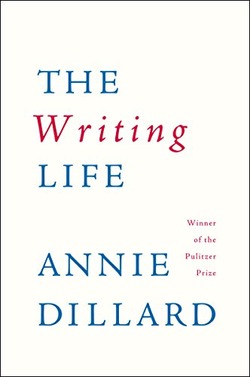Annie Dillard’s The Writing Life (1989) is less an instruction manual for would-be writers and more a reality check. “Why people want to be writers I will never know”, she says, and over seven essays examines the act of writing and the mentality of being a writer. What follows is plenty of advice, both personal and drawn from other creatives, that invite reflection on one’s own work, processes, and dedication.
The life of a writer is (“colorless to the point of sensory deprivation”), with many sat in rooms “recalling the real world.” Dillard’s advice gives us her world, but through books, from spartan desks, and windows with drawn blinds. These are places where “imagination can meet memory in the dark”. Such environments encourage the writer.
Those writers eager to share their work or daunted by the blank page (“that page will teach you to write”) can find much reassurance in these pages. There’s no rush. The world isn’t waiting for your manuscript. Writing is rewriting. Kill your darlings. Sometimes you have to abandon the previous day’s work. It’s okay to do that in pursuit of the greater work. Be assured, it takes time to write a book. Take your time. For all we hear of writers who can churn out classics at a prolific rate, “there is no call to take human extremes as norms.”
The opening essay is, to my mind, the fizziest. While it focuses on writing as a pursuit and its sacrifices (of time; of one’s own words), it does so by happily pushing through all manner of metaphor, from workmen and their tools to the wonders of nature. But there’s caution advised throughout to the eager writer and a certain suspicion of anyone who would think to deliver a movie in book form. Readers want to read.
If at times Dillard expresses frustration just like any other person, working day in, day out, that hates their job but does it anyway, she also recognises that writing is “life at its most free, if you are fortunate enough to be able to try it, because you select your materials, invent your task, and pace yourself.” A final extended flourish, likening writing to an aerial display, encourages writers to go deep, to transcend, and to deliver, while always going forward.
